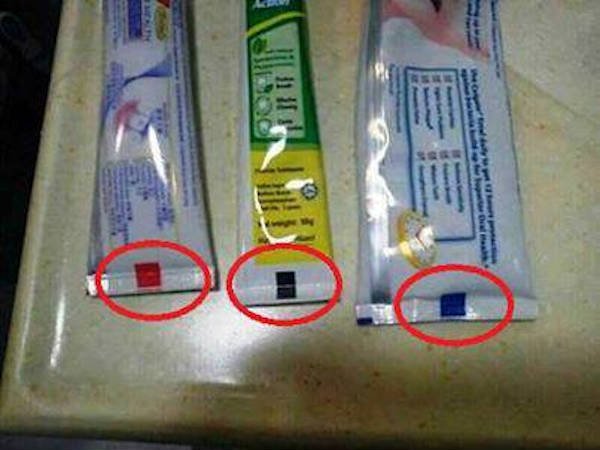In the age of viral internet myths, one persistent rumor has caught the attention of countless social media users: the idea that the colored squares at the bottom of toothpaste tubes reveal hidden information about their ingredients. Despite widespread sharing, this claim is nothing more than an elaborate misconception that has spread like wildfire across digital platforms.
Unraveling the Toothpaste Color Code Myth
Countless social media posts and online forums have propagated the belief that these colored marks – typically green, blue, red, or black – somehow indicate the composition or quality of the toothpaste. Some versions of the myth suggest that these colors represent whether the product contains natural ingredients or is entirely chemical-based. Others claim they reveal the type of processing used in manufacturing.
The Real Story Behind the Color Marks
The truth is far more mundane and technical. These colored marks are actually crucial components of the manufacturing process, serving a very specific purpose in packaging production. They are known as “eye marks” or “light beam sensors” and play a critical role in guiding packaging machines during the production process.
- These color marks help machines precisely cut, fold, and seal toothpaste tubes
- Different manufacturers may use different color systems depending on their specific machinery
- The marks are purely functional and have absolutely nothing to do with the toothpaste’s ingredients
How Manufacturing Sensors Actually Work
During the production of toothpaste tubes, sophisticated packaging machines use light beam sensors to ensure accurate positioning and cutting. The colored marks serve as reference points for these sensors, allowing for precise alignment of the packaging material. Each color might correspond to a specific machine or production line, but they are entirely unrelated to the product’s composition.
What Really Matters: Reading the Ingredients List
Instead of relying on mythical color codes, consumers should focus on the actual ingredients list printed on the toothpaste packaging. This is the only reliable way to understand what your toothpaste contains. Typical toothpaste ingredients include:
- Fluoride (sodium fluoride, sodium monofluorophosphate)
- Humectants like glycerin and sorbitol
- Abrasives for cleaning
- Flavoring agents
- Binding agents
The Danger of Misleading Information
Such myths can potentially mislead consumers, causing unnecessary confusion about their oral care products. By perpetuating false information, these viral claims can distract people from making informed decisions about their dental health.
Making Informed Choices
When selecting a toothpaste, consider the following advice:
- Always read the complete ingredients list
- Consult with dental professionals about your specific oral health needs
- Look for toothpastes approved by dental associations
- Don’t be swayed by unverified social media claims
Conclusion
The toothpaste color code myth is a perfect example of how misinformation can spread rapidly in the digital age. These colored marks are simply manufacturing guides, not secret ingredient indicators. By understanding the true nature of these marks, consumers can approach their oral care choices with greater knowledge and confidence.
Remember, when it comes to your health, always seek information from credible, scientific sources rather than viral social media posts.






